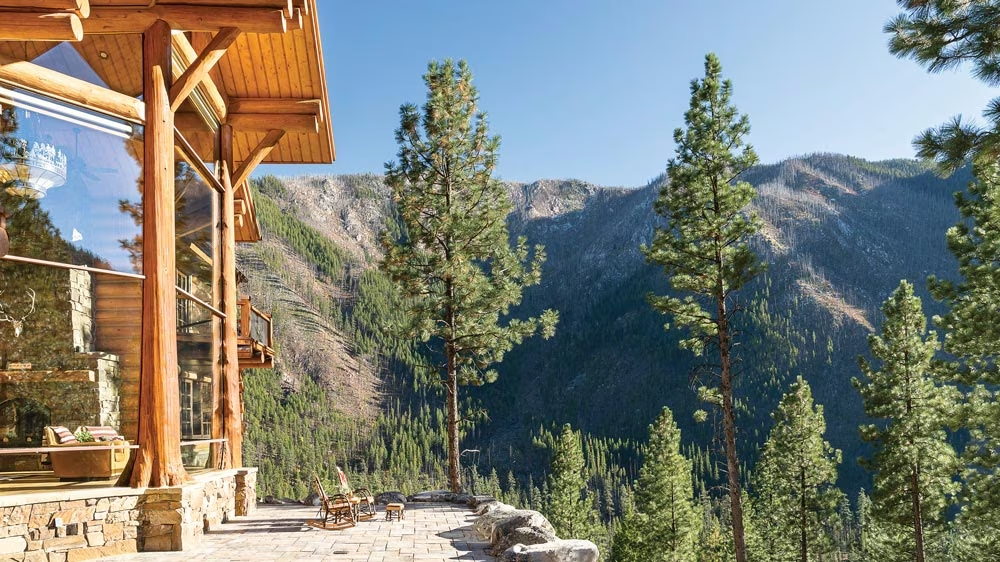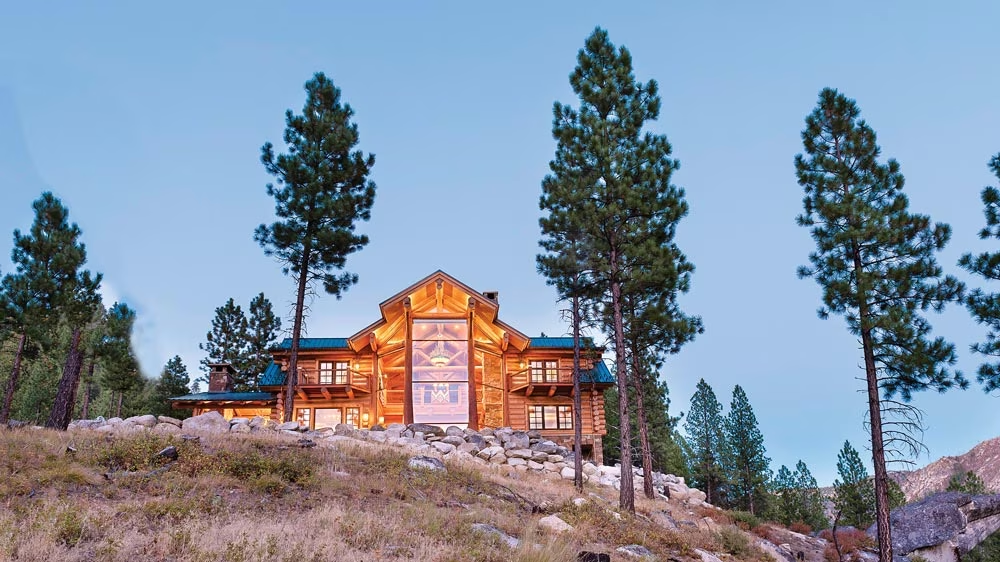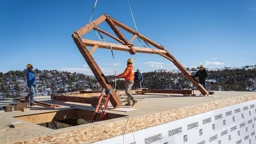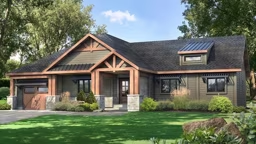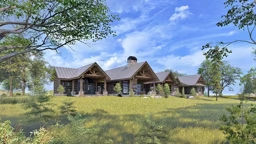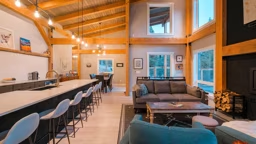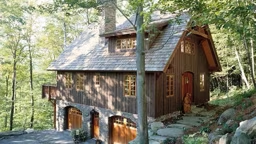Longing for a log or timber frame home in the mountains is as natural as a bear seeking out a beehive. It’s a sweet combination. When designing a mountainside home, not only do you factor the layout of your dream kitchen and the number of bedrooms and baths you’ll need, but also the way these spaces can be accommodated on what’s often a steeply pitched piece of property.
A sloped lot offers numerous advantages for your new dream home, including stunning views, abundant sunlight for the interior and the ability to include a walk-out basement — but it also can present a few challenges, says Matt Franklin, lead architect at Meridian, Idaho, headquartered PrecisionCraft Log & Timber Homes. With 25 years of design experience, Matt has seen it all.
“Clients will come to us with a lot that ‘they got a really good deal on’ only to discover that there is a reason it was a bargain — it has changed hands multiple times because it’s too expensive to build on it.”
These stories of squashed hopes and dreams are the last thing designers and architects want their clients to experience, so Matt advises home buyers to involve their entire team, including the designer, builder, real estate agent and a soil engineering firm, to assess any plot of land you’re considering purchasing. They also can help determine where well and septic systems can be placed. All this can be done under a contingency agreement, allowing you time to investigate before you fully commit to the property.
Though a sloped lot can be more complicated than a flat piece of land, the challenges are not insurmountable. With the help of a qualified, experienced team, people live out their mountainside log and timber home dreams every day. Here’s how.
Go Vertical.
Matt advises his clients to go with a two- or even three-story design and a smaller overall footprint to save costs. To add volume and stability to the foundation, invest in 10-foot sidewalls for a walkout basement, with plenty of large windows and sliding-glass doors to admit daylight. A custom staircase can add architectural appeal, but since navigating a multi-story home gets more difficult as we get older, a two-person elevator is a smart upgrade to age in place.
In addition, “The home should be oriented with the front entry facing the hillside, with the great room and open floor plan facing the view,” Matt says.
Consider Slope and Grade.
In addition to the materials you choose, a parcel’s gradient rating also will impact construction costs. Less than 10 percent is considered slight; 11 to 20 percent is moderate; and anything greater than 20 percent is considered steep. The steeper it gets, the more costly it becomes.
Also at issue is whether the lot is upslope or downslope. Downslope from a road is preferable for a myriad of reasons, including minimizing excavation and retaining-wall construction.
An upslope lot, where the home is above the road, is more challenging because that requires engineered retaining walls and extra excavation — sometimes even blasting.
Adapt to Terrain.
“If there are significant rock formations, an artistic option is to incorporate these formations into the interior of the home,” says Brian Schafer, founder of Edgewood in McCall, Idaho.
Instead of costly excavation and retaining walls, Brian advises this: “A more organic solution is to work around the topography and utilize it in the home’s design. Drilling and epoxying heavy bolts into the base rock will allow us to secure the home to the ground while minimizing the impact to the site.”
Drainage.
Unwanted water infiltration is the enemy of any home, but in a log or timber home, it can be even more devastating. Having a thorough drainage strategy is important to protect the foundation and wood. French drains equipped with filtration fabric should be installed at the perimeter of the property, as well as near the foundation.
“Additionally, the hard surface areas, such as driveways, patios and roofs, create runoff that must be thoughtfully directed away from the home’s foundation,” Brian warns.
Outdoor Spaces.
Outdoor areas are an essential part of log and timber home living. But when your house is perched on a hillside, incorporating porches, patios and decks takes a little ingenuity. “To overcome the challenges of a steep slope, it’s typically easier to terrace the lot; however, if the ground is excessively steep (more than 45 degrees) terracing may be more problematic,” Brian says. “An alternative is an open, elevated foundation or pier system, which can be used to integrate raised decks supported by the same piers.”
Involving your whole construction team on a sloped lot will mean you get the best design for your forever home and won’t leave any opportunity unexplored.




